#early poems of william morris
Text
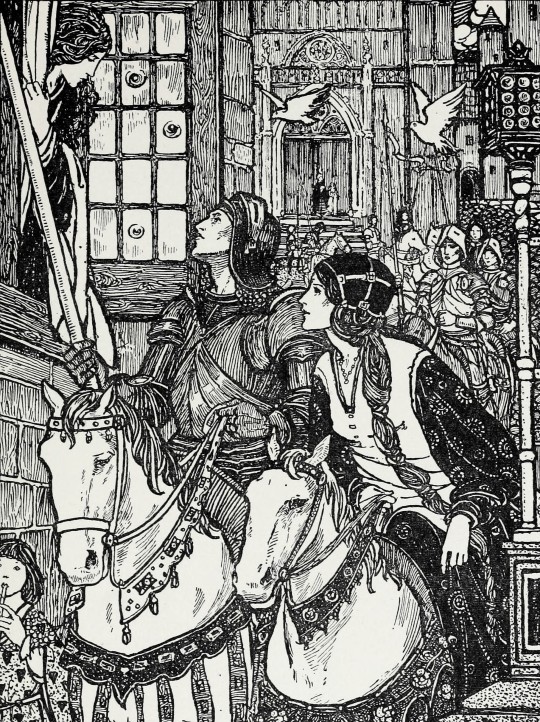
Welland River (1914) - Florence Harrison
#illustration#florence harrison#welland river#early poems of william morris#william morris#1910s#1914#horse#knight
152 notes
·
View notes
Text
"The breeze at dawn
has secrets to tell you.
Don't go back to sleep.
You must ask
for what you really want.
Don't go back to sleep.
People are going back and forth across the doorsill
where the two worlds touch.
The door is round and open.
Don't go back to sleep."
- Rumi
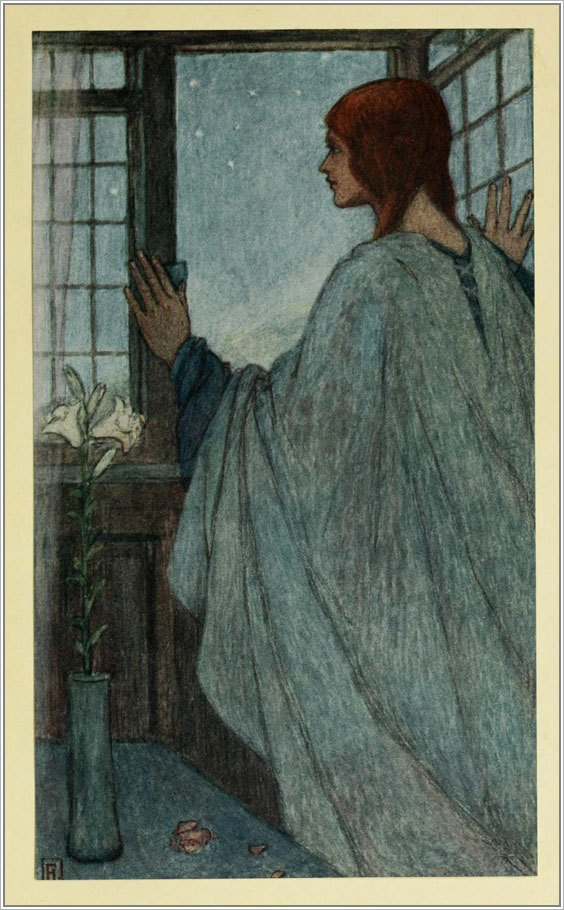
Illustration by Florence Harrison for Summer Dawn, from The Early Poems of William Morris, 1914
#Rumi#dawn#breeze#listen#secrets#sleep#doorway#between the worlds#heart and soul#art and soul#messages#messengers#mighty companions#guides#illustration#Florence Harrison#Summer Dawn#Early Poems of William Morris#1914#vintage illustration
23 notes
·
View notes
Text

Early Poems of William Morris
1914
Artist : Florence Harrison
#early poems#william morris#1914#florence harrison#pre raphaelism#pre raphaelite#arthurian mythology#arthurian legend#arthurian literature#arthurian lore
8K notes
·
View notes
Text





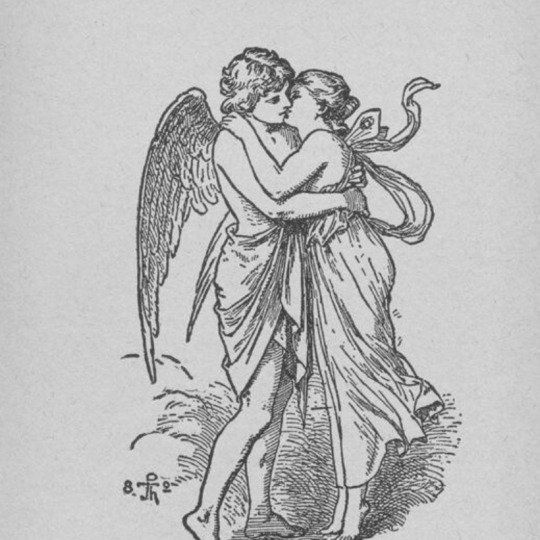


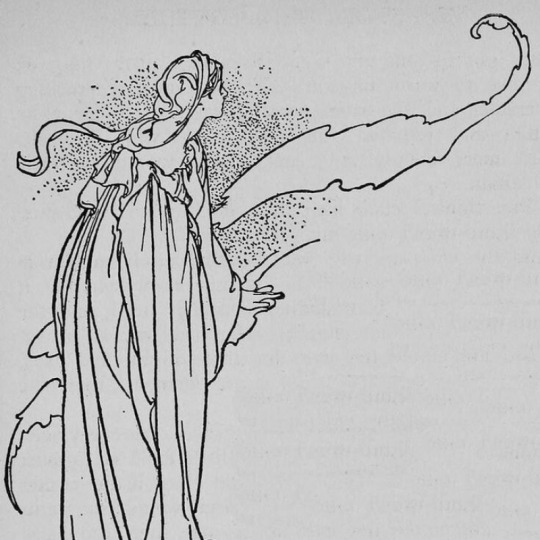
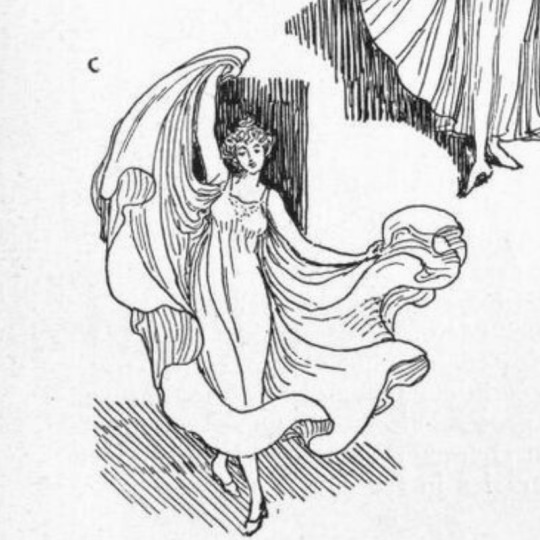
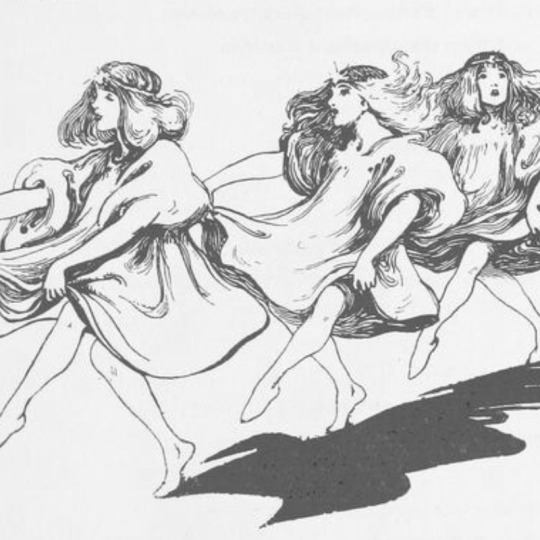
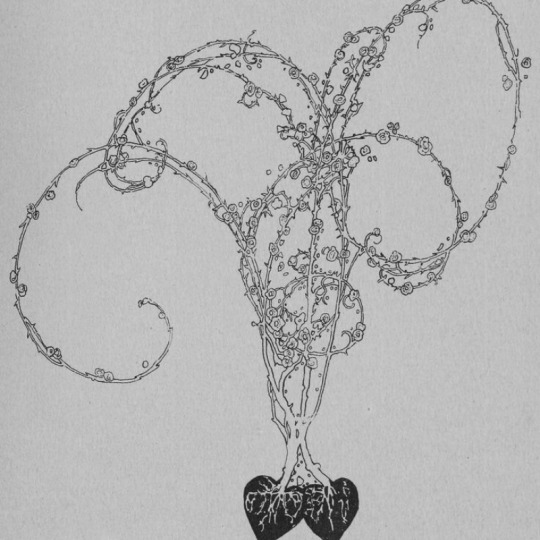


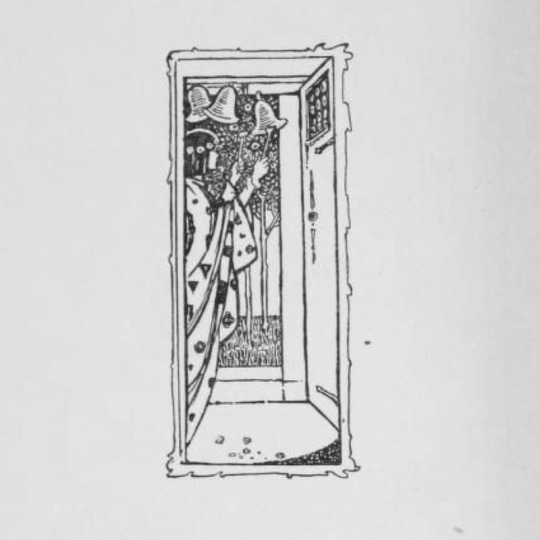





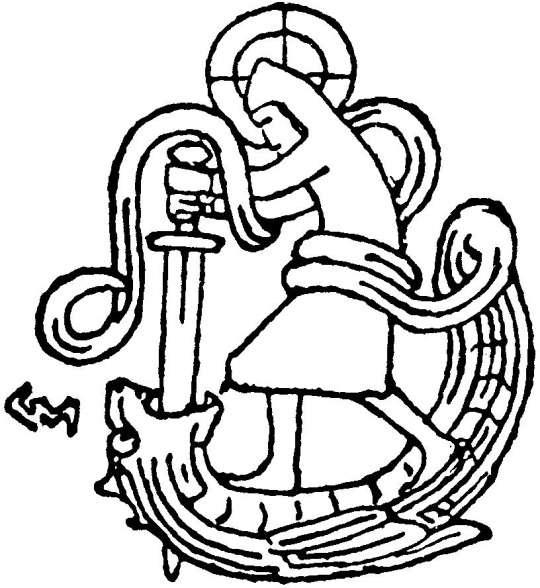

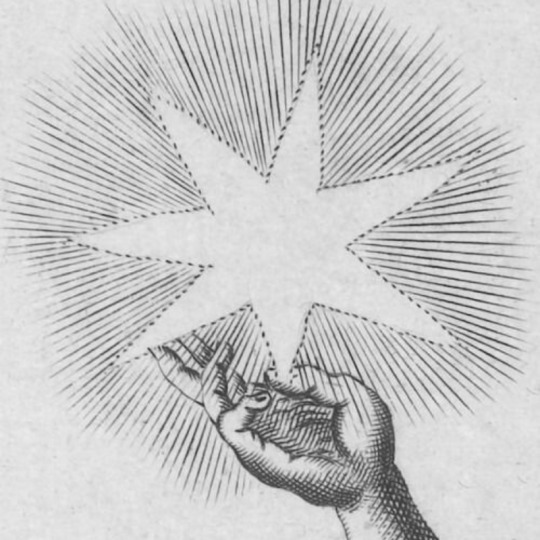

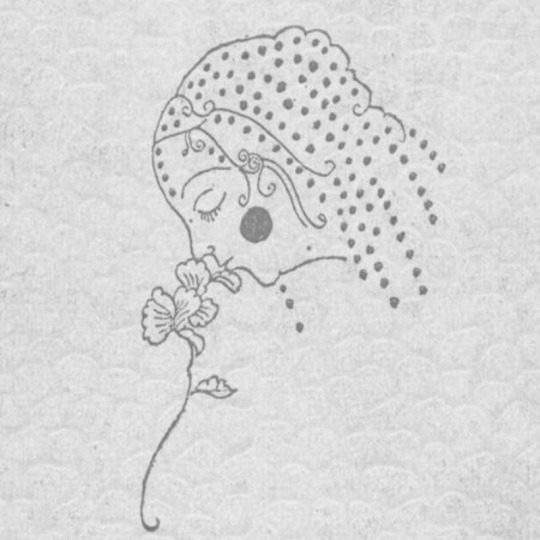
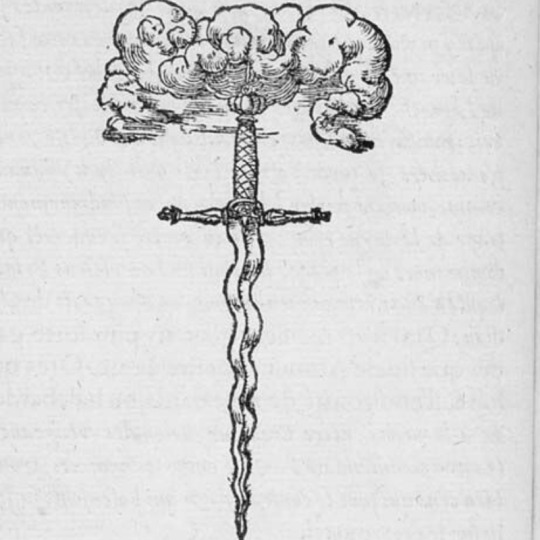

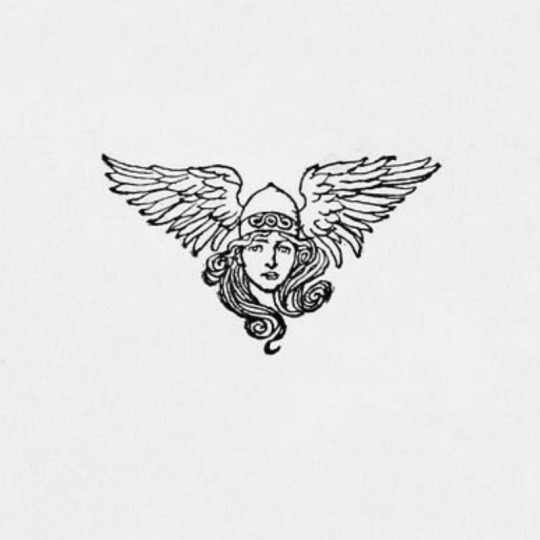
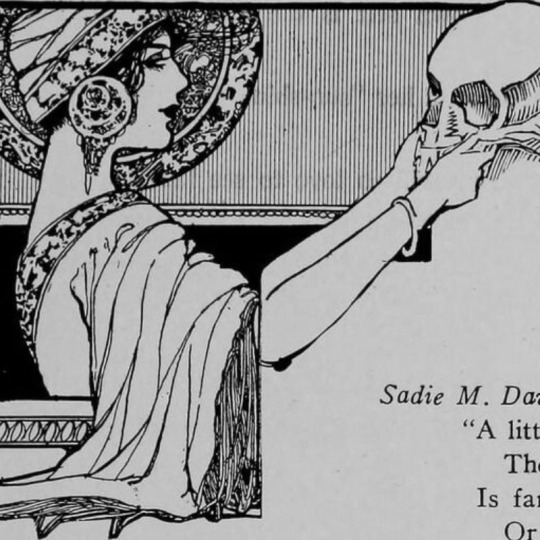

vintage illustrations + my tattoo list
#is from a bride book but the art is by john r neill#arthur rackham udine#also john r neill#from the 1914 book of shakespeare midsummer night's dream by i think william heath#it's by robert anning bell#the curiosities of kissing by alfred fowler but not sure if he's the artist#is in greek theatre costumes by iris brookes#in the book the golden fleece and the heroes who lived before achilles and the artist is willy pogany#in the book fairy tales by hans christian andersen and the artist is charles robinson#in line and form by walter crane#in the book kitchen maid and the artist is j. b. partridge#in the book the tale of lohengrin knight of the swan and the artist is willy pogany#in the book by john keats but idk the artist#in the book illustrators of montmartre by emanuel frank#in the book early poems of william morris#in the book the eve of st anges and artist is edmund h garrett#in the book home theatricals made easy or busy happy and merry#in the book the illustrated london instructor#in the book songs for little people and artist is h stratton#from alfred tennyson's poems and artist is eleanor forescue brickdale#artist is gerhard munthe#in arthur rackham's wagner ring cycle: the valkyrie#tiburtijnse sibille by jan luyken#by peter behrens#by shigeru hatsuyama#in the book devises heroiques by claude paradin#in the book price list of magical apparatus and illusions from 1884#in arthur rackham's ring cycle: valkyrie (this is my newest tattoo i got!!)#in scapel: the 1911 year book of the woman's medical college of pennsylvania#in the child world by artist c robinson
207 notes
·
View notes
Text

“Rapunzel” by Florence Harrison for “The Early Poems of William Morris,” 1914
#rapunzel#florence harrison#the early poems of william morris#fairy tale#illustration#english art#20th century
64 notes
·
View notes
Text


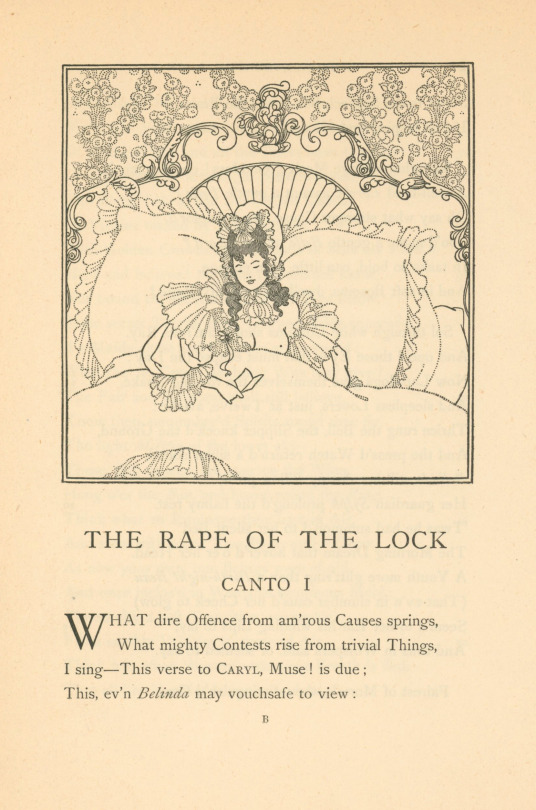
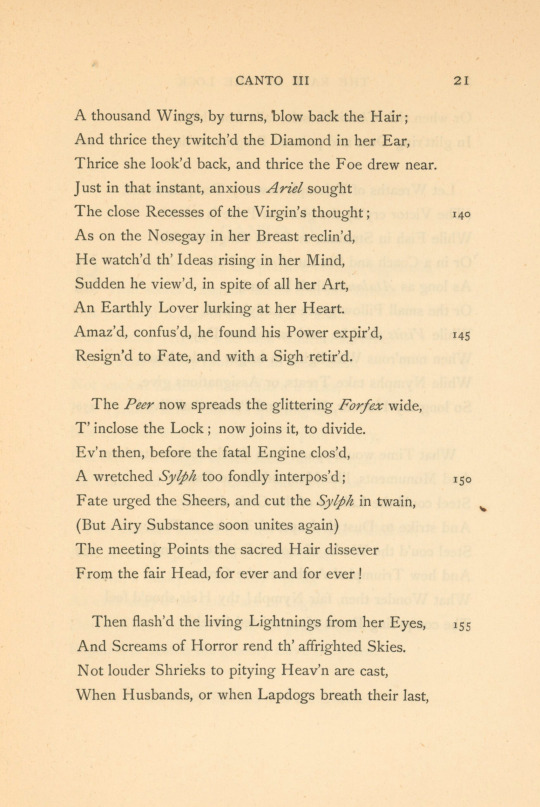


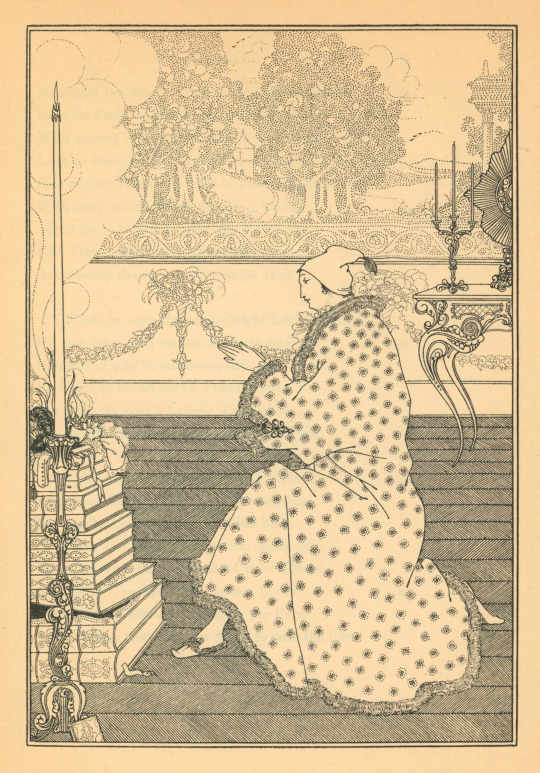

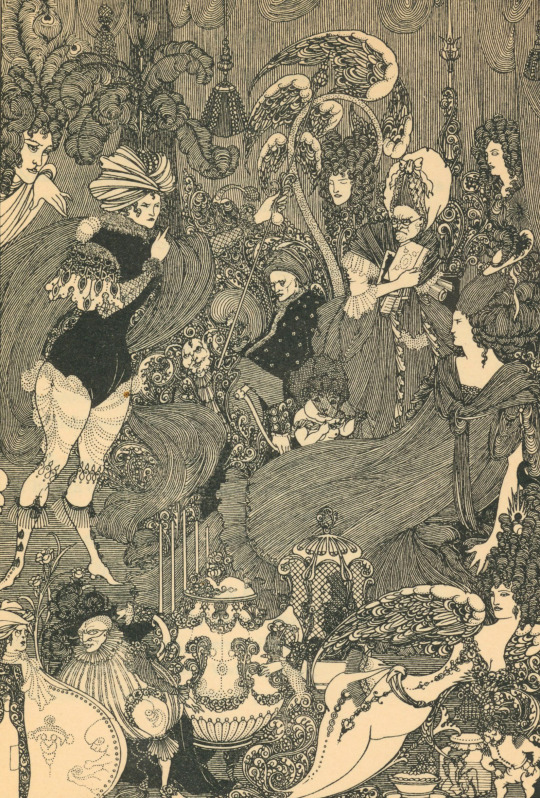
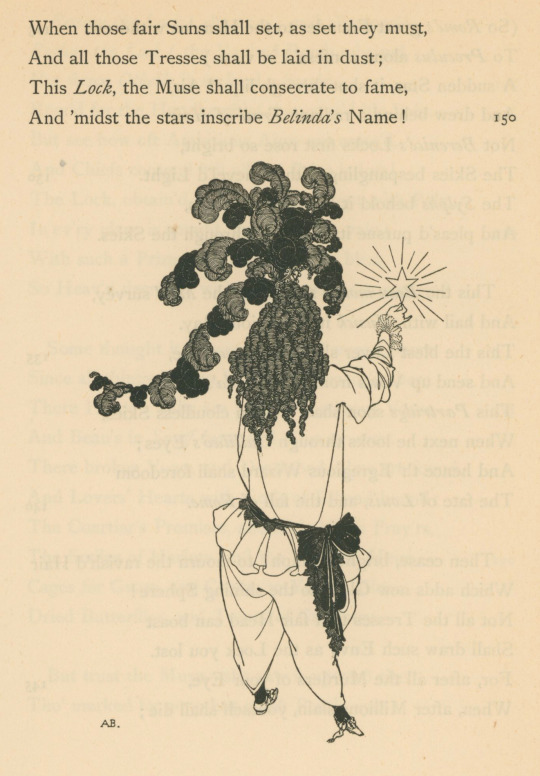
It’s Fine Press Friyay!
This week we’re digging into our 1896 copy of Alexander Pope’s (1688-1744) The Rape of the Lock: an heroi-comical poem in five cantos, which features decadent illustrations by Aubrey Beardsley (1872–1898). This crown quarto edition of 500 was issued in London by Leonard Smithers (1861-1907). It was printed on deckle edge paper at the Chiswick Press.
This publication is an excellent example of high burlesque, a style of satire in which “a literary, elevated manner was applied to a commonplace or comically inappropriate subject matter.” Pope’s epic treatment of a minor event of social trespass- the theft of a lock of Arabella Fermor’s (1696-1737) hair by Lord Petre (1689-1713), her suitor at the time of the incident and soon-to-be ex-fiancée, mocked the excessive role of social mores and morality in European culture of the era through exaggerated imitation.
Leonard Smithers was a London bookseller and publisher associated with the Decadent Movement, a 19th century Western European artistic and literary movement that prized aesthetic excess, artificiality, and hedonism. In addition to his support for Beardsley’s work, he also promoted the work of a number of controversial figure or the time including, amongst others, Max Beerbohm, Aleister Crowley, and Oscar Wilde.
The Chiswick Press was founded in 1811 by Charles Whittingham (1767–1840), who found success in producing accessibly priced editions of classics. His nephew Charles Whittingham II (1795–1876), who took over in 1840, was known for printing William Morris’s (1834-1896) early work, and would establish the press as part of the Private Press Movement in England, which started in reaction to the mechanization of book production. Contributors to the Private Press Movement championed the material qualities of their publications, lending heightened consideration to aesthetic choices and reviving traditional techniques of typography, binding, paper making, and printing.
--Ana, Special Collections Graduate Intern
View more Chiswick Press posts
View more Alexander Pope posts
View more Aubrey Beardsley posts
view more Fine Press Friday posts.
#Fine Press Friday#Fine Press Fridays#Chiswick Press#Aubrey Beardsley#Alexander Pope#crown quarto#The Rape of the Lock#high burlesque#satire#Decadent Movement#Leonard Smithers#Private Press Movement#Arabella Fermor#Lord Petre#Ana
89 notes
·
View notes
Photo

Illustration from The Early Poems of William Morris by Florence Harrison (1914)
#florence harrison#art#illustration#golden age of illustration#1910s#1910s art#vintage art#vintage illustration#vintage#australian artist#australian art#books#book illustration#childrens books#poetry#poetry art#art nouveau#florence susan harrison#classic art
2K notes
·
View notes
Text
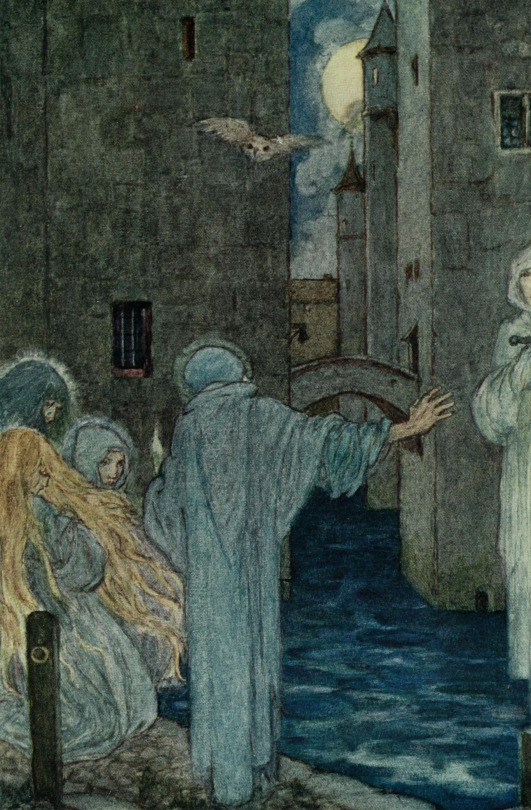
"No one walks there now; Except in the white moonlight the white ghosts walk in a row"
Florence Harrison (1877-1955) - White Ghosts Walk in a Row
Illustration from the "Early poems of William Morris", 1914
#florence harrison#white ghosts walk in a row#william morris#ghost#ghosts#paranormal#supernatural#art#story illustration#painting
67 notes
·
View notes
Text

Art of Myth and Fairy Tale
Blessed Kiss, from the illustrations Emma Florence Harrison to The Early Poems of William Morris
43 notes
·
View notes
Text

Illustration from the Early Poems of William Morris, Florence Harrison, published in 1914.
72 notes
·
View notes
Text
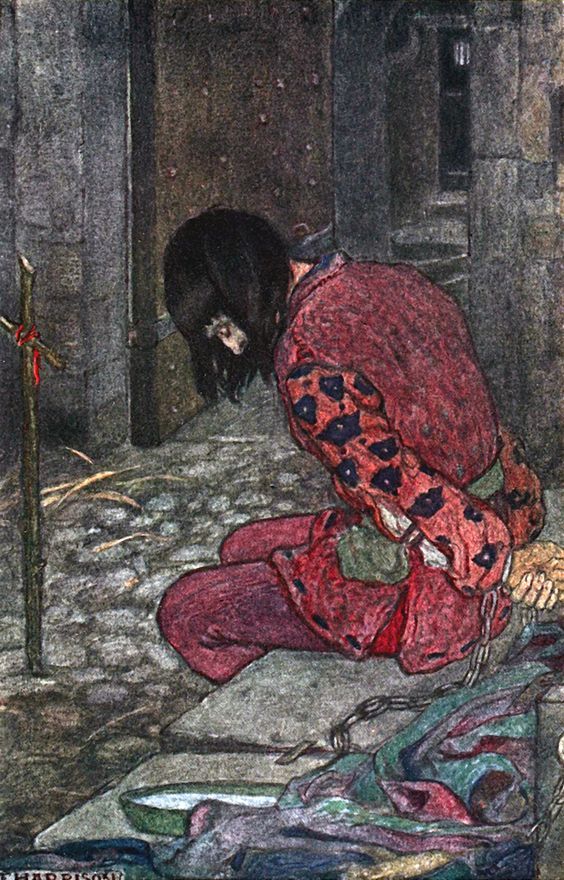
Early poems of William Morris; : Morris, William, 1834-1896
via
76 notes
·
View notes
Text

Old Love (1914) - Florence Harrison
#illustration#florence harrison#old love#early poems of william morris#william morris#1910s#1914#flower#roses
27 notes
·
View notes
Text

Early Poems of William Morris
1914
Artist : Florence Harrison
« Sir Peter Harpdon’s End »
#early poems#william morris#florence harrison#1914#sea#stairs#illustration#old illustration#vintage illustration#golden age of illustration#poetry#classic poem#pre raphaelite#pre raphaelism#arthurian mythology#arthurian legend#arthurian literature#arthurian lore#alice#sea gulls#castle#middle age#medieval#moyen âge
679 notes
·
View notes
Text






Chapter headings & tail pieces designed by Florence Harrison for “Early Poems of William Morris” (1914)
3 notes
·
View notes
Text
The Parliament Fart of 1607, or Satire and Respectability
On the 4th March, 1607, just after being read a message from the Lords, one of the younger members of the English Parliament, Henry Ludlow, farted somewhat loudly, enough that everyone heard it. This event was noted enough that it is remembered even now as the Parliament Fart of 1607.
Farting was common in humour throughout the Medieval and Early Modern periods, as broad humour involving sexuality and scatology was quite widespread, however in-person farting was considered indiscreet for a gentleman. Cleanliness and control of one's bodily functions was associated with sophistication, and farting could be particularly awkward in a society that associated bad smells with infection (see miasma theory). So this was the kind of thing that might damage your reputation, even your career, particularly at a public event. But, in the end, Henry Ludlow escaped relatively unscathed, he had other scandals given his quarrelsome nature, so perhaps that distracted people.
What did emerge from this moment however was a series of manuscript poems satirising the event. Manuscript, hand-writing, was the standard form for controversial writings because it couldn't be traced back to a specific printing-press, as seen similarly in the "libels" of the time where people would mock recently-deceased political figures. This one was written many times in different ways, and continued to be reimagined as late as the 1660's early Restoration.
All versions start with the fart, often described him similar wordings, and then follow a format of rhyming couplets with various named members standing up to respond to the fart. There's a bit of mischief here in how the members, speaking largely like they would with any other parliamentary business, attempt to keep a sense of dignity in their responses.
One example has the first sentences as:
"Downe came grave auntient Sr John Crooke
And redd his message in his booke.
Fearie well, quoth Sr William Morris, Soe:
But Henry Ludlowes Tayle cry’d Noe.
Up starts one fuller of deuotion
Then Eloquence; and said A very ill motion
Not soe neither quoth Sr Henry Jenkin
The Motion was good; but for the stincking
Well quoth Sr Henry Poole it was a bold tricke
To Fart in the nose of the bodie pollitique." (Bodleian Library manuscript, Malone 23)
You can get a sense of the style of these poems from that. At the time of the original incident, the parliament was debating the naturalisations of the Scots after the Union of the Crowns under James VI and I.
James was originally a Scottish king before English, somewhat subverting the original English desire to conquer Scotland, which unsurprisingly some people weren't very happy about, the Gunpowder Plotters themselves where partially motivated by anti-Scottish xenophobia. His mother was Mary Queen of Scots (of head-losing fame) but he was separated from her long before she died and raised by his Protestant relatives. Because of their descent from the line of Henry VII's eldest daughter Margaret, many considered James and his mother as the primary heirs to the throne, so his Protestantism cleared many of the barriers for his acceptance his mother had faced. Though it's unclear whether Elizabeth ever really accepted James as heir, he was increasingly treated as de-facto heir in the later years of her reign.
Because James inherited the English crown separately (and associated crown of Ireland, English dominion over Wales and not-yet-forgotten claim to the throne of France) it remained entirely independent from and distinct to his kingdom of Scotland. James disliked the idea of holding two crowns at the same time when the system were quite different, so he became the first person to propose the political idea of Great Britain, which would not become a reality until the reign of his great-grandaughter Anne in 1707. While he could only use the title Britain in prerogative matters, things the King could do unilaterally, since he could not convince parliament to accept it, James wanted parliament to at least recognise Scottish subjects born after the union, "post nati", to have natural rights at English subjects.
Naturally, this was one of the subjects referenced in the first Parliament Fart Poems, along with other contemporary topics like freedom of speech and royal finances. But the different versions changed significantly over time. They didn't just fiddle with wordings, they also adapted to reference different issues. Later in James' reign there was the Overbury Scandal, a political murder, and the 1624 Monopolies Bill, on a form of profiteering patenting, later versions written during the 1640's took on the context of the intense parliamentary debate at that time leading up to the civil war. And when it re-appeared in the Restoration, it was used to mock parliament from a Royalist perspective, despite most previous uses being more pro-parliament.
Of course, at the end of the day, the Parliament Fart Poem wasn't just about politics or any other serious topic, it was also play, it was funny, it was fun to write neat little rhyming couplets. It appealed to a taste for irreverent crude humour that was popular at the time even in higher circles. You can see a similar sense of humour in many of Shakespeare's play, so it was far from alone in mixing the high and the low, that was what made such pieces appealing to a relatively wide audience. They weren't too snobbish or narrowly airy. A lot of the classic literature from the Medieval and Early Modern periods had crude humourous moments, Chaucer's Canterbury Tales did too, and that was commonly reprinted in this period as a kind of vintage classic.
Perhaps in the modern day we could also use a moment to laugh at a fart, we'd be in good company.
3 notes
·
View notes
Text
my old/beautiful book collection
the pretty books shelves

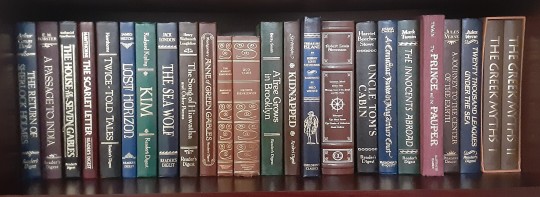
my Tolkien collection

vintage fiction

antique and vintage Bible study books

I have very few truly old books, but more than I remembered are from the early 20th century. List of titles and more details under the cut
pretty books shelves
Reader’s Digest editions: Little Women (Alcott), Tales from the Arabian Nights, Emma & Pride and Prejudice (Austen), Jane Eyre (Brontë), The Last of the Mohicans (Cooper), The Adventures of Robin Hood (Creswick), Two Years Before the Mast (Dana), David Copperfield, Oliver Twist & A Tale of Two Cities (Dickens), The Robe (Douglas), The Adventures, The Further Adventures, The Memoirs, & The Return of Sherlock Holmes (Doyle), A Passage to India (Forster), The House of the Seven Gables, The Scarlet Letter & Twice-Told Tales (Hawthorne), Kim (Kipling), The Sea Wolf (London), The Song of Hiawatha and other poems (Longfellow), Anne of Green Gables (Montgomery), A Tree Grows in Brooklyn (Smith), Kidnapped (Stevenson), Uncle Tom’s Cabin (Stowe), A Connecticut Yankee in King Arthur’s Court & Innocents Abroad (Twain), A Journey to the Centre of the Earth & Twenty Thousand Leagues Under the Sea (Verne)
The Confessions of Saint Augustine—E. B. Pusey translation, Franklin Library edition. This was a Christmas gift from my parents and @bluesidedown has the same one
The Pilgrim’s Progress (Bunyan)—CBN University Press Christian Classics. I don’t actually remember where I got this one but most likely from my dad.
Through the Looking Glass (Carroll)—Heritage Press edition with slipcover and illustrations by John Tenniel. Again, probably from my dad but not 100% sure (he gives me a LOT of books).
The Complete Canterbury Tales (Chaucer)—F. H. Hill translation, Arcturus books with slipcover and illustrations by Edward Burne-Jones and William Morris. Another Christmas gift where Blue and I got matching copies from our parents.
Heretics & Orthodoxy (Chesterton)—Hendrickson Christian Classics. Again, a Christmas gift from my parents.
Nemesis & The Mirror Crack’d From Side to Side (Christie)—Heron Books. Another one I can’t remember the origin of.
The Prairie (Cooper)—Easton Press collector’s edition. From my parents, Christmas this year. This is pretty much the handsomest book I own.
Great Expectations (Dickens)—Chatham River Press. Based on the inscription on the flyleaf this belonged to my dad first. Probably I got it as a gift or in his thinning of his collection.
The Scarlet Pimpernel (Orczy)—International Collector’s Library. Another of unknown origin.
Quo Vadis (Sienkiewicz)—International Collector’s Library. It amuses me that in organizing these books alphabetical by author’s last name, these two matching editions still ended up side by side.
Treasure Island (Stevenson)—Children’s Classics, illustrated by Milo Winter.
Treasure Island–Prince Otto–Strange Case of Dr. Jekyl and Mr. Hyde–Kidnapped–The Black Arrow–The Master of Ballantrae–David Balfour (Stevenson)—Canterbury Classics omnibus. I actually have most of these in other editions, but I keep this for the ones I don’t have elsewhere.....and keep the other editions too because I am a book-dragon.
The Prince and the Pauper (Twain)—Portland House Illustrated Classics, illustrated by Franklin Booth. Not sure where I got this one.
The Greek Myths (Graves)—Folio Society, two volumes in slipcover. These were a Christmas gift from my parents a couple years ago, because I collect fairy tales and folk tales and suchlike.
Tolkien
These are mostly newer Houghton Mifflin or HarperCollins editions. The Silmarillion has Ted Naismith illustrations; Children of Húrin has Alan Lee illustrations, as do the covers of LotR; The Hobbit and LotR have Tolkien’s original illustrations and maps, and Roverandom has cover art by him as well; and Bilbo’s Last Song, Farmer Giles of Ham, The Adventures of Tom Bombadill, and Smith of Wooton Major are all illustrated by Pauline Baynes.
vintage fiction (top down, left column first)
Malory’s Le Morte d’Arthur—Norwood Press, 1911
Stalky & Co. (Kipling)—Macmillan and Co, 1927. Completely leatherbound with gilt spine and seal on the front cover
The Master of Ballantrae & The Black Arrow (Stevenson)—Everyman’s Library, 1938
Popular Fairy Tales (Andersen)—Blackie and Son. No date, but google tells me it’s from sometime in the 30s/40s/50s based on the binding style
Jo’s Boys (Alcott)—The Children’s Press, 1965
Around the World in Eighty Days (Verne)—Dean and Son. No date, but I’m guessing mid-twentieth century
Three Cheers Secret Seven (Blyton)—Brockhampton Press, 1960
The Burgess Animal Book for Children—Little, Brown, and Company. Copyright 1948, though likely printed later
At the Back of the North Wind (MacDonald), The Little Lame Prince (Mulock), King Arthur and his Knights (Frith), All the Mowgli Stories (Kipling)—Junior Deluxe Edtions. Illustrations are copyright 1956, no print dates
The Door in the Wall (de Angeli)—Doubleday. Copyright 1949, no print date
Freckles (Porter)—Grosset & Dunlap, 1916. Very beat up and mostly held together by packing tape on the spine
The Call of the Wild (London)—Grosset & Dunlap, 1910. It has a very faded picture glued to the front cover as part of the original binding, as well as illustrations throughout. Quite worn, with many pages about to or falling out
Kilmeny of the Orchard (Montgomery)—Ryerson, 1947. This was actually printed before the Anne series was entirely published, as the list of Montgomery’s works in the front only includes the first three books in the series
Captains Courageous (Kipling)—Thrushwood Books. Date uncertain, but google tells me probably 1950s
Heidi (Spyri)—Collins, 1958. While this did originally belong to my dad, it’s the copy I read as a kid and has been on my shelf for a long time
The Mark of the Horse Lord (Sutcliff)—Oxford University Press, 1965. I learned in making this list that my copy is probably a first edition, albeit rather beat up from being a school library copy.
Warrior Scarlet (Sutcliff)—Oxford University Press, 1966. I also have a 1973 copy that still has its dust jacket.
Robinson Crusoe (Defoe)—Dent/Dutton, 1966. A beloved favourite copy that I read many times
Twenty Thousand Leagues Under the Sea (Verne)—Charles Scribner’s Sons, 1953. Another beloved copy that I read many times, I flatly refuse to part with this one despite having a less faded and beat-up edition because 1) I am dreadfully sentimental and 2) the illustrations in this edition are much better than in the RD edition.
King Arthur and His Knights of the Round Table (Lanier)—Illustrated Junior LIbrary. Illustrations copyright 1950, no print date
antique and vintage Bible study books
Young’s Analytical Concordance—per a pencil note on the title page this was published circa. 1937, and it definitely looks the part
The Bible as History in Pictures (Keller)—Published in 1964, this is definitely outdated in terms of archaeological evidence of Bible events but it still fascinates me to see
The New English Bible: New Testament—as a Library Edition, I don’t think this strictly counts as a first edition, but it is definitely an early edition as it was printed in 1961 when the NT translation was completed (OT translation of this version wasn’t completed until 1970)
Exposition of Genesis (Leupold)—Wartburg Press, 1942
The Epistle to the Hebrews (Brown)—Banner of Truth, 1961
Luke the Physician (Ramsay)—Baker Book House, 1956
The Gospel in Ezekiel (Guthrie)—Adam and Charles Black, 1857 (or MDCCCLVII if you prefer). This is the oldest book I own, and while is is now quite beat up - the spine is 80% tape and the front cover has come off completely and been replaced with cardboard - I can tell it was a very handsome book when it was new. The spine is bound in dark blue and brown leather, with gilt lettering and decoration, and the edges of the pages have beautiful multicolour marbling on them.
#ooops this is veeeery long#in my defence i have rather a lot of books#so even the fraction that are old/beautiful is quite a few#to quote leah: hope this is enjoyable to others and not just wildly self-indulgent#i had fun and learned a few things about the books i own#and remembered a few i had forgotten i have#about
11 notes
·
View notes